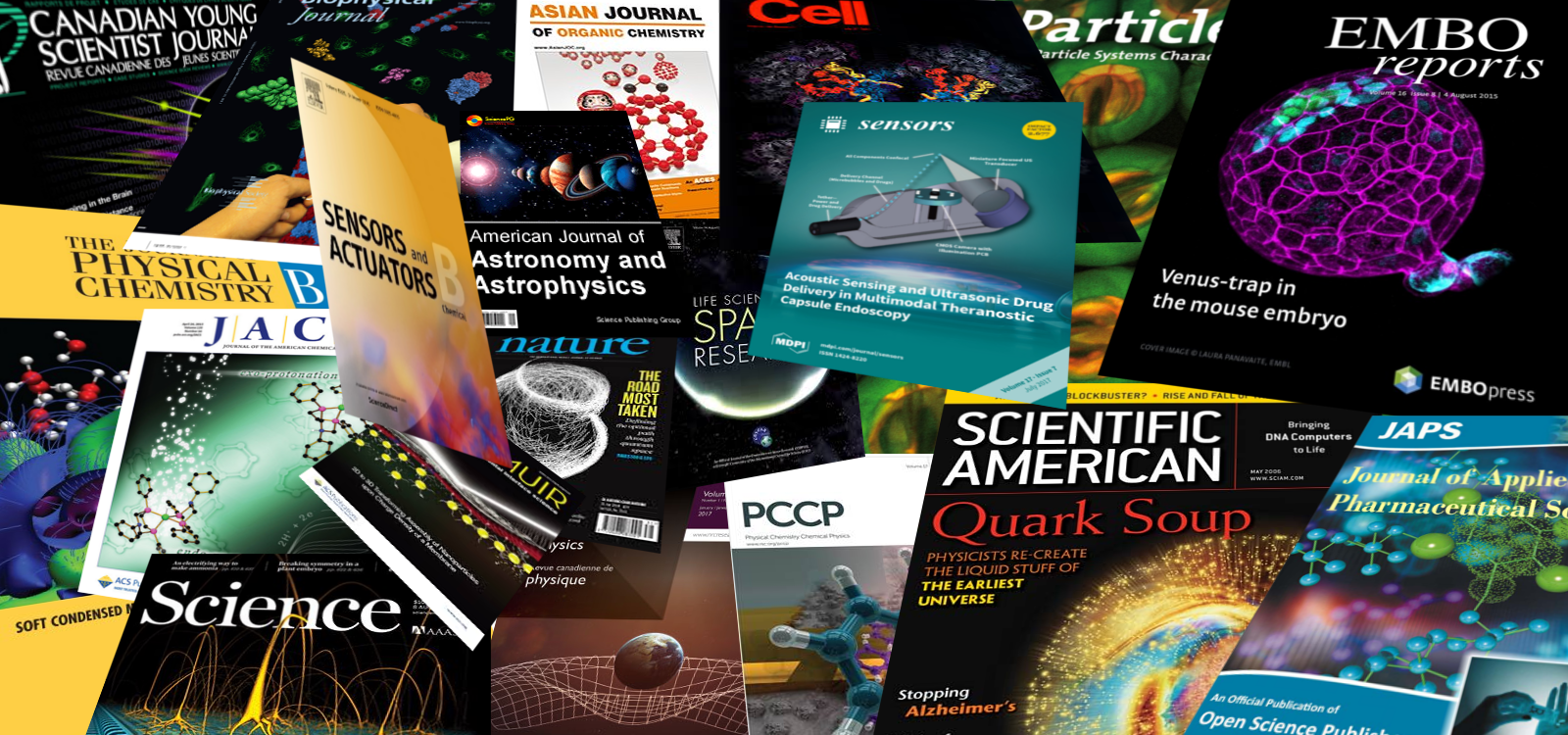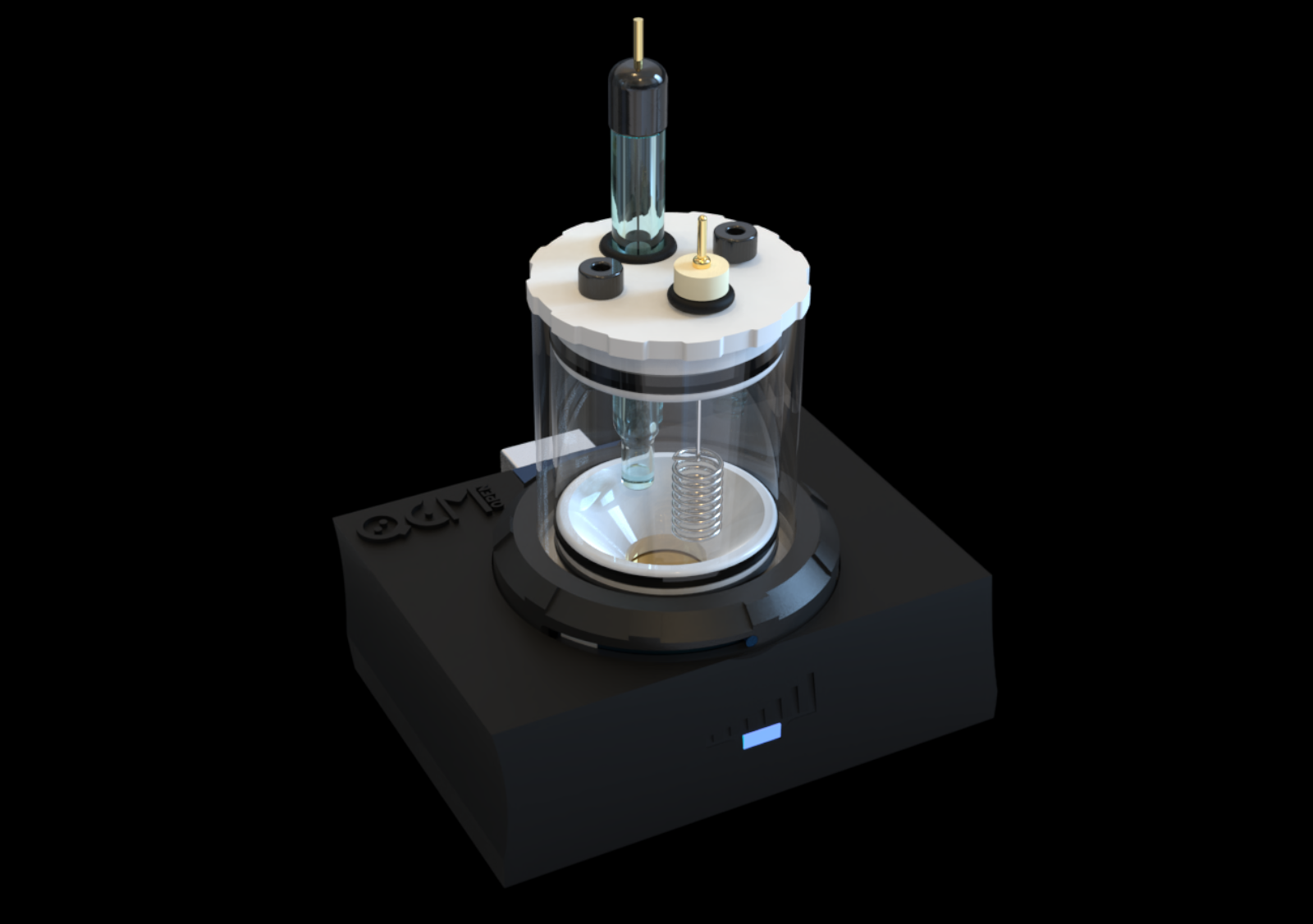openQCM – Powered by Novaetech S.r.l

Scientific Papers
Publications citing the applications of openQCM (by Novaetech S.r.l.) instruments and accessories in scientific research.
The list of scientific papers published on the most important journals showing the usage of openQCM in several scientific fields, such as thin film deposition, chemical sensors, biological research and biosensors.
Because of the large number of publications, we are reorganizing everything by subject areas. This will take some time. Thank you for your patience
2025
Gamaniel, Samuel S.; Vries, Erik G.; Tromp, R. Hans; Hoog, Els H. A.; Vreeker, Rob; Matthews, David T. A.; Heide, Emile
Influence of plant-based compounds on the structural stability of mucous boundary layers in tribological contact Journal Article
In: Tribology International, vol. 209, pp. 110688, 2025, ISSN: 0301-679X.
Abstract | Links | BibTeX | Tags: Astringency, Fava bean protein isolate, Mucous boundary lubrication, openQCM Q-1, Polyphenols, QCM-D, Quartz Crystal Microbalance, Tannic Acid, Tribology
@article{GAMANIEL2025110688,
title = {Influence of plant-based compounds on the structural stability of mucous boundary layers in tribological contact},
author = {Samuel S. Gamaniel and Erik G. Vries and R. Hans Tromp and Els H. A. Hoog and Rob Vreeker and David T. A. Matthews and Emile Heide},
url = {https://www.sciencedirect.com/science/article/pii/S0301679X25001835},
doi = {https://doi.org/10.1016/j.triboint.2025.110688},
issn = {0301-679X},
year = {2025},
date = {2025-09-01},
urldate = {2025-01-01},
journal = {Tribology International},
volume = {209},
pages = {110688},
abstract = {This study presents a new methodology for understanding the molecular interactions of plant-based compounds on lubricating boundary layers in oral contacts. The methodology was used to investigate the impact of a plant protein (fava bean protein isolate) and a phenolic compound (tannic acid) on the structure and lubricating property of mucous boundary layers. Tribological experiments, coupled with quartz crystal microbalance with dissipation monitoring measurements and fluorescence microscopy imaging, were used to elucidate the mechanism of boundary film disruption and lubrication losses. It was found that even at concentrations up to 5 % w/v, fava bean proteins bind to mucins and hydrophobic polydimethylsiloxane (PDMS) surfaces, forming a hydrated, hydrophilic layer that sustains lubrication. Conversely, even at concentrations lower than 0.5 % w/v, tannic acid interacts strongly with mucins via hydrophobic interactions and/or hydrogen bonding, leading to protein aggregation, interrupting mucin binding onto PDMS, and increasing friction due to the disruption of the lubricating boundary layer. Fluorescent microscopy images revealed that the tannic acid-bovine submaxillary mucin interaction impairs the stability of the mucous boundary film, facilitating mucous protein detachment during a single sliding experiment of a PDMS probe. Results from these investigations provide critical insights into the molecular-level mechanisms influencing oral lubrication, particularly for the development of polyphenol-rich foods, and emphasize the importance of tribological assessment as a research tool in the development of plant-based protein alternatives.},
keywords = {Astringency, Fava bean protein isolate, Mucous boundary lubrication, openQCM Q-1, Polyphenols, QCM-D, Quartz Crystal Microbalance, Tannic Acid, Tribology},
pubstate = {published},
tppubtype = {article}
}
This study presents a new methodology for understanding the molecular interactions of plant-based compounds on lubricating boundary layers in oral contacts. The methodology was used to investigate the impact of a plant protein (fava bean protein isolate) and a phenolic compound (tannic acid) on the structure and lubricating property of mucous boundary layers. Tribological experiments, coupled with quartz crystal microbalance with dissipation monitoring measurements and fluorescence microscopy imaging, were used to elucidate the mechanism of boundary film disruption and lubrication losses. It was found that even at concentrations up to 5 % w/v, fava bean proteins bind to mucins and hydrophobic polydimethylsiloxane (PDMS) surfaces, forming a hydrated, hydrophilic layer that sustains lubrication. Conversely, even at concentrations lower than 0.5 % w/v, tannic acid interacts strongly with mucins via hydrophobic interactions and/or hydrogen bonding, leading to protein aggregation, interrupting mucin binding onto PDMS, and increasing friction due to the disruption of the lubricating boundary layer. Fluorescent microscopy images revealed that the tannic acid-bovine submaxillary mucin interaction impairs the stability of the mucous boundary film, facilitating mucous protein detachment during a single sliding experiment of a PDMS probe. Results from these investigations provide critical insights into the molecular-level mechanisms influencing oral lubrication, particularly for the development of polyphenol-rich foods, and emphasize the importance of tribological assessment as a research tool in the development of plant-based protein alternatives.
2023
Lai, Hy K
Lamar University-Beaumont, 2023.
Abstract | Links | BibTeX | Tags: Alzheimer, openQCM, Polyphenols, QCM
@phdthesis{lai2023evaluation,
title = {Evaluation of Natural Polyphenols for Anti-Aggregation and Potential Neuroprotection Against Beta-Amyloid, in Vitro},
author = {Hy K Lai},
url = {https://www.proquest.com/openview/8f7abb9443acf3e32d9a153907a21885/1?pq-origsite=gscholar&cbl=18750&diss=y},
year = {2023},
date = {2023-01-01},
urldate = {2023-01-01},
school = {Lamar University-Beaumont},
abstract = {Alzheimer’s disease, a multifaceted neurodegenerative disorder, was the seventh leading cause of death at 5.8 million deaths in 2021 for all ages, with projections indicating a nearly threefold increase by 2060. The current treatment paradigm primarily involves behavioral management while attempting to alleviate symptoms, with limited focus on addressing the underlying pathogenesis: the formation and deposition of β- amyloid. Given the expected surge in Alzheimer’s disease cases in the coming decades, the quest for dietary and nutraceutical solutions as lifelong preventive measures becomes increasingly critical. This dissertation presents a comprehensive investigation into the neuroprotective potential of four prominent polyphenolic compounds: colominic acid, resveratrol, luteolin, and isosilybin. These compounds, found naturally in various plant sources, have drawn increasing attention for their potential to mitigate Alzheimer's disease and its associated cognitive impairments. The evaluation scheme starts with a toxicity assessment of each compound, followed by an investigation into their interactions with Aβ monomer and oligomers, and finally categorization of their neuroprotective mechanisms. The findings were mainly quantified using MTT viability in
vitro assay and were validated with Congo Red and flow cytometry analysis. Moreover, the protocol developed herein provides a repeatable and comparable assessment for potential confounders to attenuate Aβ-induced toxicity of Alzheimer’s disease. These insights are vital for shaping future therapeutic strategies and prevention approaches, reinforcing the potential of natural compounds as a significant avenue in advancing our understanding and approach to Alzheimer's disease.},
keywords = {Alzheimer, openQCM, Polyphenols, QCM},
pubstate = {published},
tppubtype = {phdthesis}
}
Alzheimer’s disease, a multifaceted neurodegenerative disorder, was the seventh leading cause of death at 5.8 million deaths in 2021 for all ages, with projections indicating a nearly threefold increase by 2060. The current treatment paradigm primarily involves behavioral management while attempting to alleviate symptoms, with limited focus on addressing the underlying pathogenesis: the formation and deposition of β- amyloid. Given the expected surge in Alzheimer’s disease cases in the coming decades, the quest for dietary and nutraceutical solutions as lifelong preventive measures becomes increasingly critical. This dissertation presents a comprehensive investigation into the neuroprotective potential of four prominent polyphenolic compounds: colominic acid, resveratrol, luteolin, and isosilybin. These compounds, found naturally in various plant sources, have drawn increasing attention for their potential to mitigate Alzheimer's disease and its associated cognitive impairments. The evaluation scheme starts with a toxicity assessment of each compound, followed by an investigation into their interactions with Aβ monomer and oligomers, and finally categorization of their neuroprotective mechanisms. The findings were mainly quantified using MTT viability in
vitro assay and were validated with Congo Red and flow cytometry analysis. Moreover, the protocol developed herein provides a repeatable and comparable assessment for potential confounders to attenuate Aβ-induced toxicity of Alzheimer’s disease. These insights are vital for shaping future therapeutic strategies and prevention approaches, reinforcing the potential of natural compounds as a significant avenue in advancing our understanding and approach to Alzheimer's disease.
vitro assay and were validated with Congo Red and flow cytometry analysis. Moreover, the protocol developed herein provides a repeatable and comparable assessment for potential confounders to attenuate Aβ-induced toxicity of Alzheimer’s disease. These insights are vital for shaping future therapeutic strategies and prevention approaches, reinforcing the potential of natural compounds as a significant avenue in advancing our understanding and approach to Alzheimer's disease.

